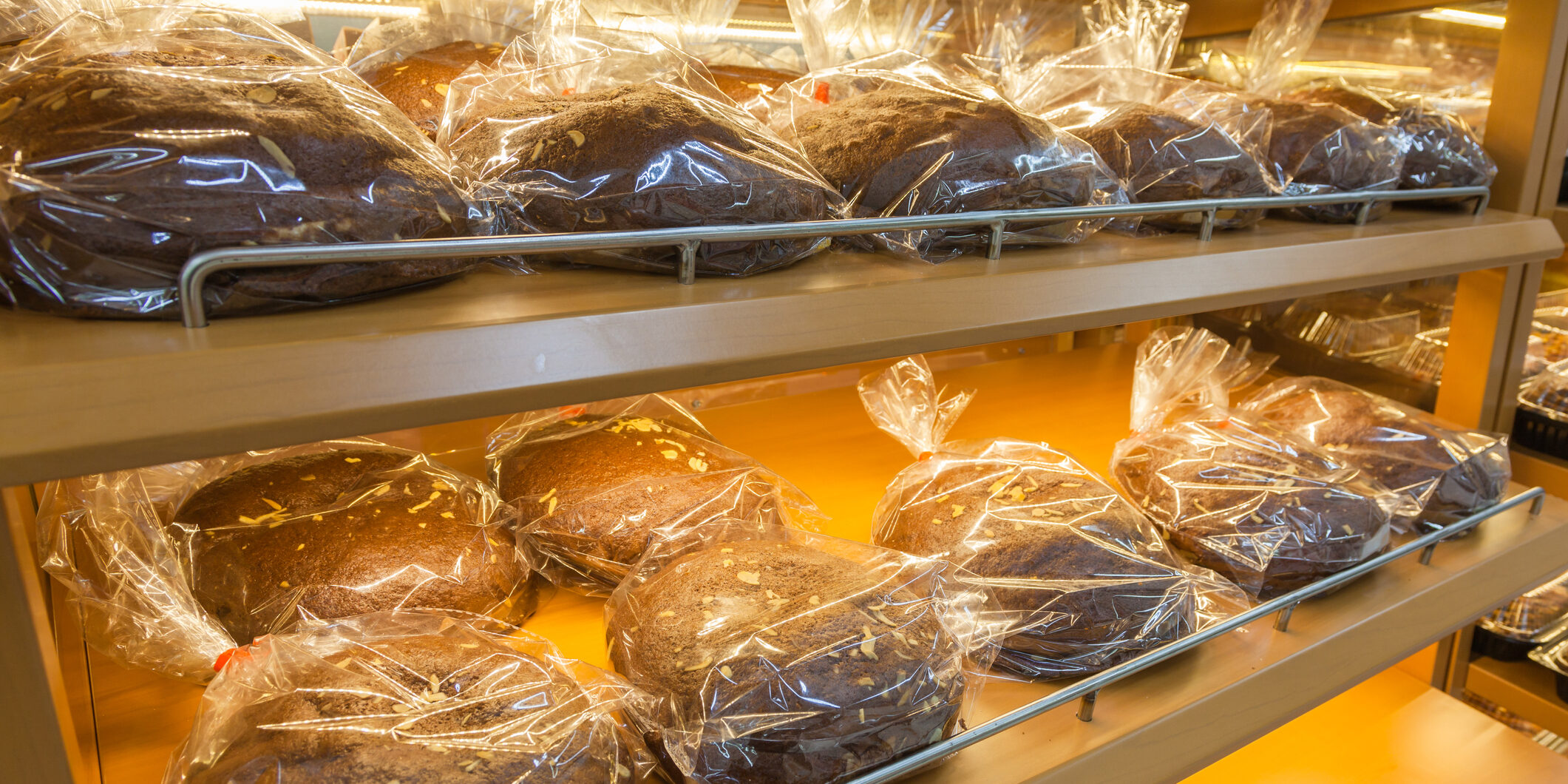How Food Grade Ethanol improves the safety and shelf-life of food
By Jillian Jastrzembski
Chances are you’ve had to toss out some greenish-blueish bread at least once in your life. Many consumers even express a preference for shorter shelf-life when faced the alternative of foreign preservatives in their food products.
This is partly why food grade ethanol is such an appealing preservative for bread and bakery products. It is an ingredient that is familiar to consumers, and has proven safety and efficacy as an anti-microbial agent and preservative in foods. But what is the optimal way to incorporate it into foods?
If you’ve ever spotted a little inedible sachet in your food packaging, then you are at least a little bit familiar with active packaging. Active packaging is designed to absorb and/or release substances into the storage environment in order to preserve the quality of food products.
One type of active packaging is ethanol emitters. But what are they and how do they work?
What are ethanol emitters?
Ethanol emitters are a type of active packaging designed to release ethanol during storage, in order to extend the shelf-life and quality of foods. This type of packaging is especially useful for bread and bakery products.
Ethanol emitters exist as inedible films or sachets that can are contained within the packaging. Ethanol is adsorbed or encapsulated onto a carrier or support material. The carrier enables a controlled release of ethanol into the food environment during the shelf storage period.
For example, the carrier could be a powder such as silicon dioxide or Zeolite. Ethanol is adsorbed onto the carrier and enclosed in a sachet. The sachet must be durable enough to prevent leakage of the carrier, but simultaneously permeable to ethanol vapors. In this way, the ethanol can be slowly released into the enclosed headspace of the package. Ethanol emitter sachets are usually composed of paper and other materials, such as low-density polyethylene or ethyl vinyl acetate laminate.
How does food grade ethanol extend shelf-life?
Perhaps you’ve heard that in historical times, drinking beer was safer than the water. Ethanol has long been known as an antimicrobial agent for food and beverages. It can inhibit not only bacterial growth, but also yeasts and molds.
For example, wine fermentation will naturally slow and halt when the wine reaches a certain alcohol content. That’s because the yeast can no longer continue the fermentation above a certain percentage of ethanol. For over a century, ethanol has also been used to protect fruits against fungal activity.
Ethanol actually preserves food by multiple different mechanisms, which is why it’s so useful. Ethanol acts on the cell wall or cell membrane of spoilage microorganisms. Ethanol emitters can also cause vital proteins to coagulate, effectively killing the spoilage organism.
In some studies, ethanol has been shown to increase the shelf-life of breads by several weeks to a month.
What makes food go bad?
There are multiple factors that can affect the shelf-life of foods. Let’s again take bread and bakery products. The presence of molds and yeasts can contribute to spoilage, including staling. Staling is the process by which water migrates outside the product, which essentially changes the networks of protein and starch. Those protein-starch networks are key to the mouthfeel and texture of the product. Another process, known as retrogradation, changes the firmness in the cell walls of bread products. This can leave the product with a ropey texture, and greatly reduce organoleptic quality.
Flavor is also implicated, since microbial growth can result in a sour off-aroma. In some cases, the ethanol itself can influence the flavor of food. Where appropriate, flavors like vanilla can be added to the ethanol emitter sachet to mask the effects of the ethanol.
Color changes are also indicative of shelf-life deterioration, since yeasts can make the protease (an enzyme that breaks down protein), resulting in the release of amino acids. Under specific conditions, those amino acids react with sugars to produce Maillard browning products (as the caramelization or toasting).
Molds are predominantly responsible for spoilage of bakery products, while yeasts also contribute to a lesser degree.
Why is food grade ethanol an important food preservative?
By inhibiting the growth of spoilage yeasts and molds, ethanol can inhibit the processes that cause staling in breads and bakery products, thereby preserving sensory quality, including flavor, appearance, and organoleptic properties.
Ethanol is a preferable preservative because it has a long history of use, is familiar to consumers, and has proven efficacy and safety. Trustworthy, food-grade packaging requires the use of high purity food grade ethanol. The presence of impurities in lower grade alcohols compromises consumer-safety.
Summary
Food grade ethanol can be used in a type of active packaging for food products, known as ethanol emitters. Ethanol emitters consist of a carrier material onto which the ethanol is adsorbed. The carrier is then encapsulated in a sachet that can release the ethanol into the headspace of the closed system during storage. The presence of ethanol inhibits the growth of microorganisms by acting on the cell wall, cell membrane, or disrupting protein configurations. This can increase the shelf-life of bakery products by several weeks, preserving the sensory quality and safety. Ethanol is an excellent choice for a preservative because it has a long history of use, proven efficacy, and safety. Food grade ethanol is essential for these applications to ensure consumer-safety.
References
Otoni, C. G., Espitia, P. J., Avena-Bustillos, R. J., & McHugh, T. H. (2016). Trends in antimicrobial food packaging systems: Emitting sachets and absorbent pads. Food Research International, 83, 60-73.
Vanmathi Mugasundari, A., & Anandakumar, S. (2022). Shelf life extension of bread using ethanol emitters with different packaging materials. Journal of Food Processing and Preservation, 46(12), e17143.
< Back


